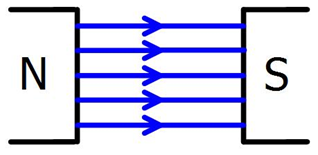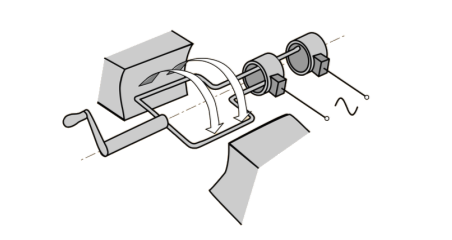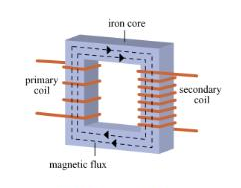6.01 use the following units: ampere (A), volt (V) and watt (W)
The unit for:
Current : amps (A)
Potential Difference : volt (V)
power : watt (W)
The unit for:
Current : amps (A)
Potential Difference : volt (V)
power : watt (W)
Opposites attract: North attracts South and South attracts North
Like charges repel: Two Norths will repel each other
Around every magnet there is a region of space where we can detect magnetism (where magnetic materials will be affected).
This is called the magnetic field and in a diagram we represent this with magnetic field lines.
The magnetic field lines should always point from north to south.
|
A uniform magnetic field is comprised of straight, parallel lines which are evenly spaced. Between two opposite charges on flat magnets, a uniform magnetic field is formed. |

When a conductor (can be a wire, coil or just a piece of metal) experiences a changing magnetic field a potential difference or voltage is induced in it. The strength of the potential difference depends on the strength of the magnetic field, how fast it changes i.e. how fast the coil is spinning, and how much of the conductor is exposed to the field i.e. how many turns in the coil.
|
Electricity can be generated by either moving a magnet inside a coil of wire or rotating a coil inside a permanent magnetic field.
Model answer for a generator (Rotating coil): · Coil is rotated within a magnetic field · As it turns the coil cuts the magnetic field lines. · This induces a voltage (or current) in the coil. · This can then be connected to an existing circuit. · In a generator, energy is being converted from kinetic (mechanical) energy into electrical energy. · The size of the induced voltage (or current) can be increased by: · Using a stronger magnet · Having more turns in the coil · Spinning/moving the coil faster.
Model answer for a generator (Rotating magnet) · Magnet is rotated within a coil · As it turns the coil cuts the constantly changing magnetic field lines from the magnet. · This induces a voltage (or current) in the coil. · This can then be connected to an existing circuit. · In a generator, energy is being converted from kinetic (mechanical) energy into electrical energy. · The size of the induced voltage (or current) can be increased by: · Using a stronger magnet · Having more turns in the coil · Spinning/moving the magnet faster.
|

|
AC current in the primary coil produces a changing magnetic field around the primary coil. The iron core channels the changing field through the secondary coil. The changing magnetic field induces a voltage in the secondary coil. |

|
Step Up transformers increase the voltage – more secondary turns than primary Step Down transformers decrease the voltage – more primary turns than secondary |
